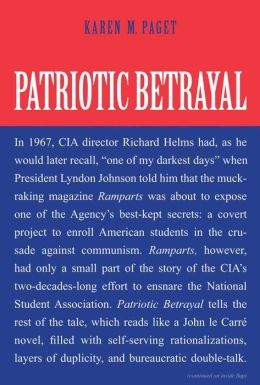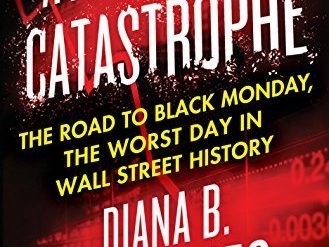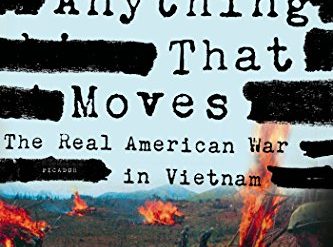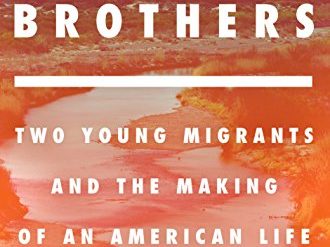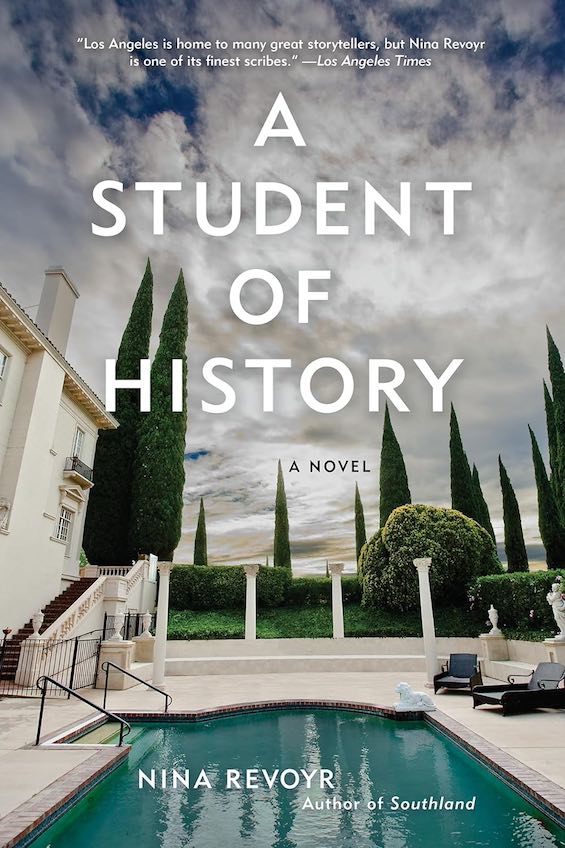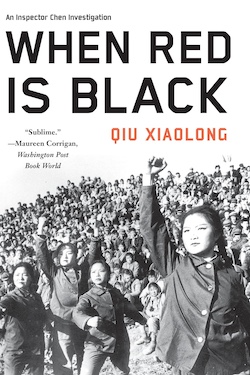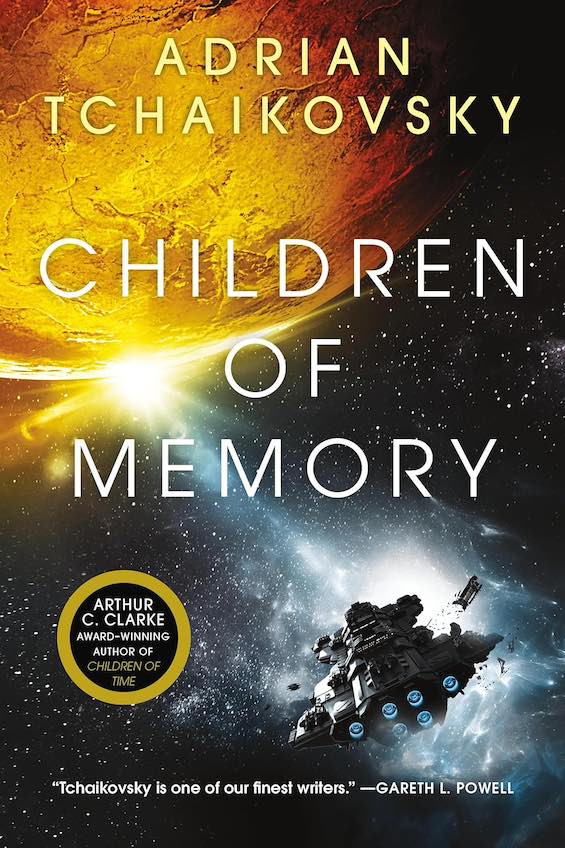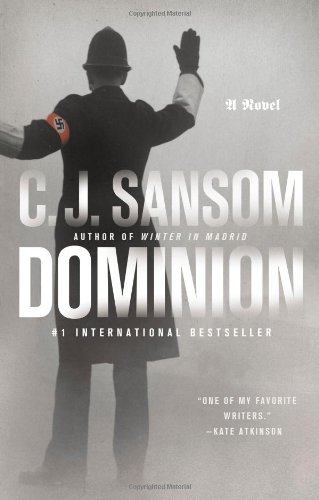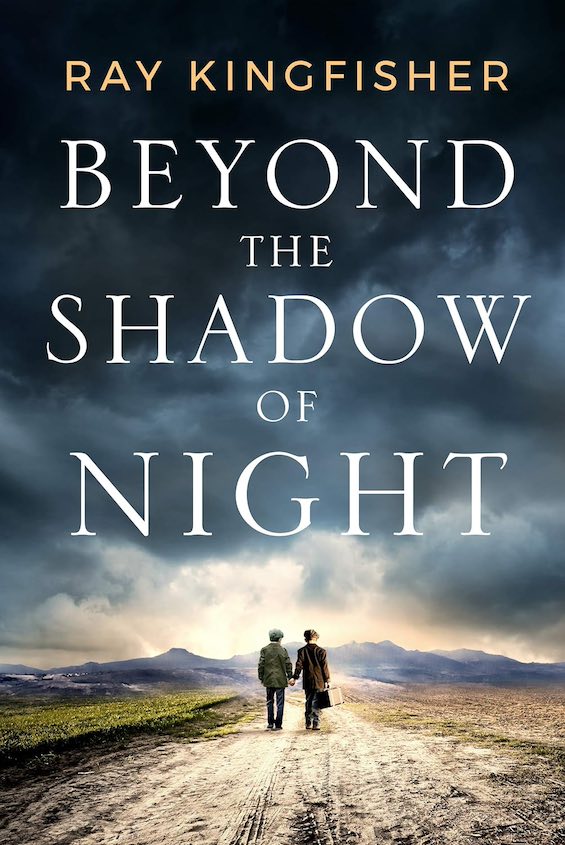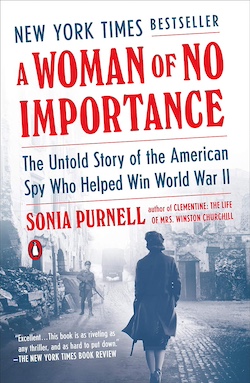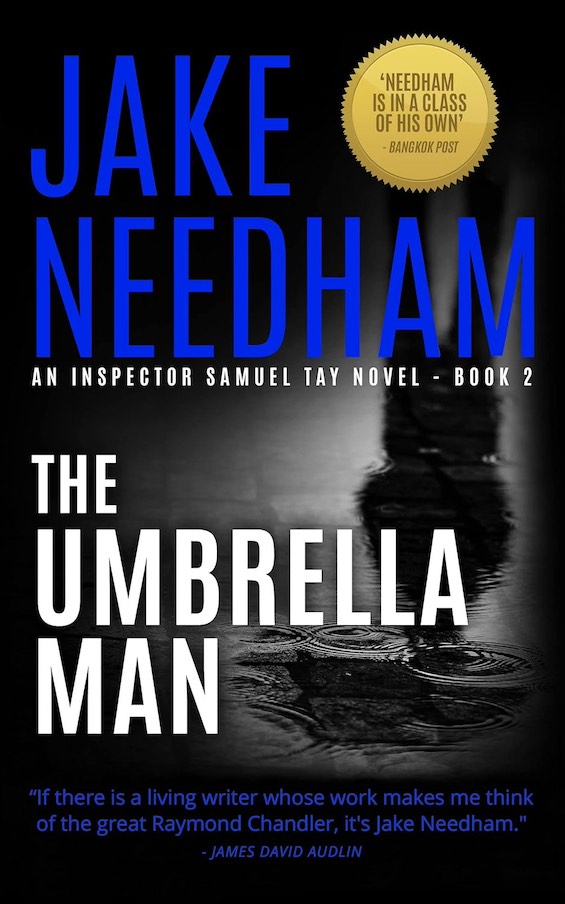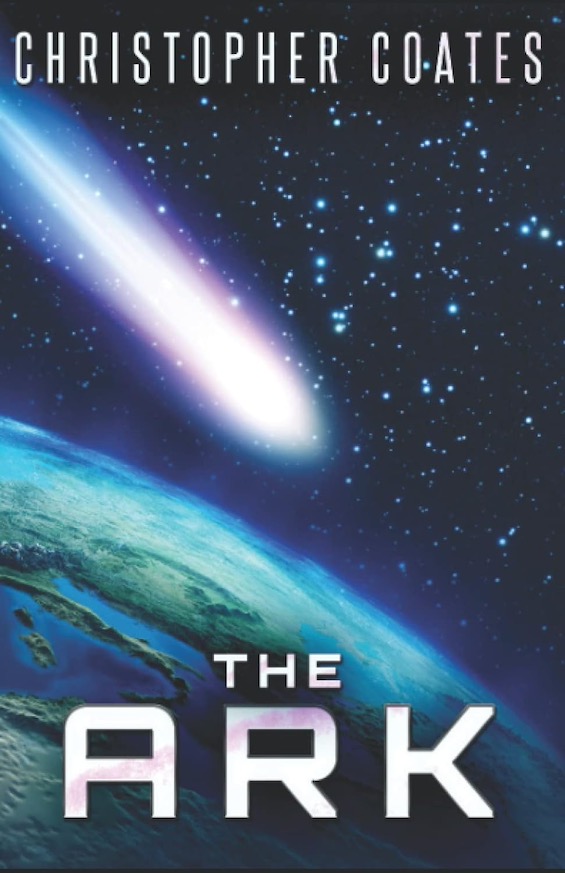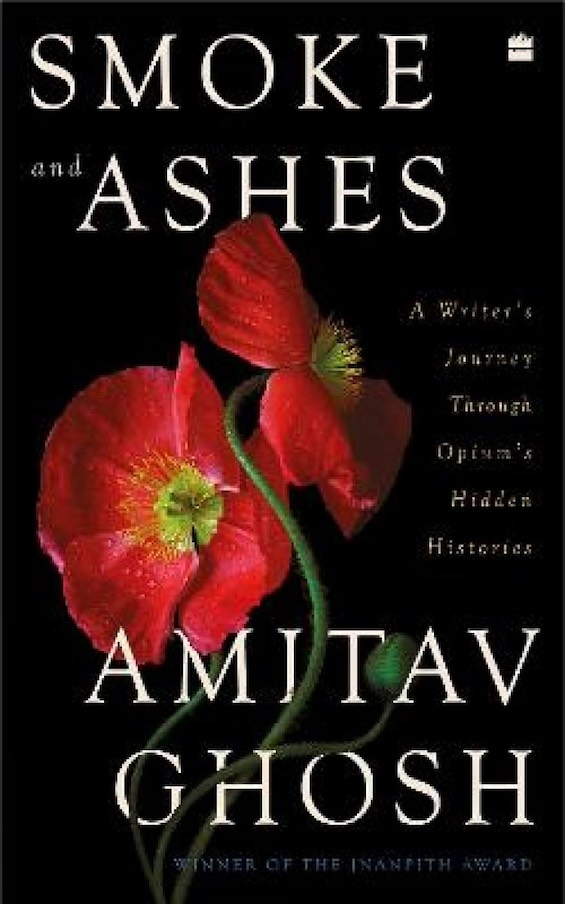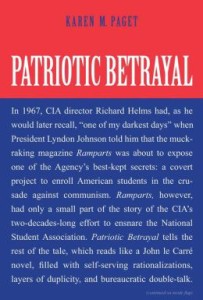
If you’re old enough, think back to the 1960s, that decade of endless turmoil and revelation. Though the CIA had been established in 1947, it wasn’t until 1962 that the agency came to the attention of most Americans, as a result of its disastrous handling of the US-backed Bay of Pigs invasion of Cuba. Five years later, another CIA scandal broke: a carefully researched article in Ramparts magazine revealed that the agency had been funding the US National Student Association (NSA) for many years and turning many of its leaders into spies.
Estimated reading time: 6 minutes
Now, nearly half a century after the Ramparts article, Karen Paget has written a blockbuster expose detailing the full history behind that story, stretching back to the origins of both organizations in the 1940s. Patriotic Betrayal is a sordid tale of deception, manipulation, and systematic lying by officers of the Central Intelligence Agency, who turned the student organization into a Cold War weapon. The book was 15 years in the making and is based on Paget’s personal experience in the NSA plus extensive archival research and more than 150 interviews with former officials of both the NSA and the CIA.
Patriotic Betrayal is not a quick read. At times Paget overwhelms with obscure acronyms and names drawn from a huge cast of characters. Still, the book is compelling, with narrative drive that relentlessly draws the reader to the end. It’s a remarkable story.
Patriotic Betrayal: The Inside Story of the CIA’s Secret Campaign to Enroll American Students in the Crusade Against Communism by Karen M. Paget (2015) 550 pages ★★★★★
A monumental work
Make no mistake: Patriotic Betrayal makes a major contribution to our understanding of how the US Government waged the Cold War. This is a monumental work that already has attracted significant advance reviews — a 2,500-word essay by Tom Hayden for The Nation, and a much longer piece by Adam Hochschild for Harper’s.
To a great degree, this is the story of a generation of student leaders who were recruited into leadership roles in the NSA and, in agency jargon, made “witting” of its connection to the CIA. A large number of those who participated in the program as students went on to lifetime careers in the CIA, and it appears that Paget has spoken with all of them who are still alive. In the process of drilling down to the roots of this unhappy episode in our country’s recent history, she tells a much broader story that reverberates with implications for the present day.
Setting the historical context
Paget sets the historical context, writing that “the burgeoning NSA international operations were nestled in a larger program of psychological and political warfare driven by U.S. intelligence.” It wasn’t just students who were corrupted: the CIA ran similar programs in the labor movement, among journalists, and in other fields.
Adam Hochschild spells out the contemporary implications in his lengthy and laudatory review in Harper’s. “Do democratic governments have the right to gather intelligence, and to gather it secretly?” he asks. “Of course: we live in a world with malicious regimes and movements. But intelligence gathering can all too easily expand into realms that have nothing to do with thwarting possible attacks — whether that means passing on information about student leaders to repressive regimes, or tapping Angela Merkel’s cell phone, or vacuuming up the emails and text messages of hundreds of millions of people at home and abroad while the highest intelligence officials deny to Congress that any such thing is happening.”
The CIA violated its own charter
Consider this: in conducting this program, the CIA violated its own charter, which prohibits the agency from running operations within the borders of the United States; acted in contempt of Congress; manipulated thousands of foreign student leaders; and no doubt broke many federal laws in the process. Has any one of the officers who conspired in this program been called to account? Of course not. Big surprise.
“The lesson of Paget’s book,” Tom Hayden writes, “is that there is a deeper housekeeping that needs to be done at every level before the United States can offer democracy as a formula. It may be impossible.”
In fairness to the CIA, Paget emphasizes that, for many years, students coopted by the agency collaborated willingly. To believe that they all felt violated at the time is to “miss the point of ideological commitment and a good recruitment program. When a student — often an older graduate student — signed the security oath and was made witting, he or she was initiated into what Allen Dulles called ‘a community of interest.’ The recruited students shared the same passions and objectives as their CIA case officers.”
My own connection to the story
For what it’s worth, I was ensnared in the CIA operation in a trivial way in 1962. I participated in an NSA “study tour” of Latin America. As I recall, there were about a dozen of us who traveled around South America, meeting with student leaders in every country and sometimes with senior politicians as well.
Our group was led by Joseph Love, an NSA staff member who, I learned years later, had been coopted by the CIA and made aware of the connection between the two organizations — standard practice for NSA international staff. I wouldn’t be surprised if one or more of the students in our group were also employed by the agency. I never wrote a report profiling the student leaders I’d met, but you can be sure that Joe Love and possibly others did that. From the CIA’s perspective, this intelligence-gathering was a principal reason for its support of the student organization.
Disclosure: I’ve known Karen Paget for more than thirty years. In our frequent meetings, I needled her mercilessly over the years about how long it was taking her to write this book, beginning after about five years. Five maybe, but fifteen? I couldn’t have imagined that. But now I see: Paget’s patient effort was worthwhile. This is an important story that transcends the particular circumstances of the CIA-NSA relationship and casts a harsh light on the shameless conduct of the US Government during the Cold War. It’s a cautionary tale about the excesses to which government may go if unchecked.
About Karen Paget
Karen Paget ran the California Policy Seminar from 1986 to 1991, a joint venture among the nine campuses of the University of California and State Government. The program was housed at UC Berkeley. Later, she was a Visiting Professor for two spring semesters in Berkeley’s political science department, teaching a course called “Women and Politics.” That course led to Running as a Woman: Gender and Power in American Politics, published in 1995, which she coauthored with Glenna Matthews and Linda Witt. There’s more information about Paget on her website.
For related reading
This is one of the many Good nonfiction books about national security and of Good books by Berkeley authors.
You might also be interested in seeing my post, “20 good nonfiction books about espionage.” This book is one of the 20.
You may enjoy browsing through 20 top nonfiction books about history.
For more good books on the history of the US, see Top 20 popular books for understanding American history.
And you can always find my most popular reviews, and the most recent ones, on the Home Page.

